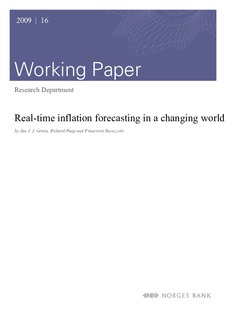| dc.description.abstract | This paper revisits inflation forecasting using reduced form Phillips curve forecasts, i.e., inflation forecasts using activity and expectations variables. We propose a Phillips curve-type model that results from averaging across different regression specifications selected from a set of potential predictors. The set of predictors includes lagged values of inflation, a host of real activity data, term structure data, nominal data and surveys. In each of the individual specifications we allow for stochastic breaks in regression parameters, where the breaks are described as occasional shocks of random magnitude. As such, our framework simultaneously addresses structural change and model certainty that unavoidably affects Phillips curve forecasts. We use this framework to describe PCE deflator and GDP deflator inflation rates for the United States across the post-WWII period. Over the full 1960-2008 sample the framework indicates several structural breaks across different combinations of activity measures. These breaks often coincide with, amongst others, policy regime changes and oil price shocks. In contrast to many previous studies, we find less evidence for autonomous variance breaks and inflation gap persistence. Through a real-time out-of-sample forecasting exercise we show that our model specification generally provides superior one-quarter and one-year ahead forecasts for quarterly inflation relative to a whole range of forecasting models that are typically used in the literature. | nb_NO |

